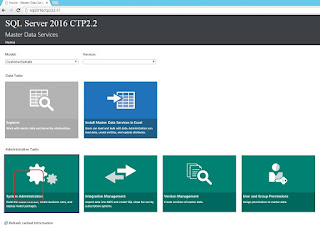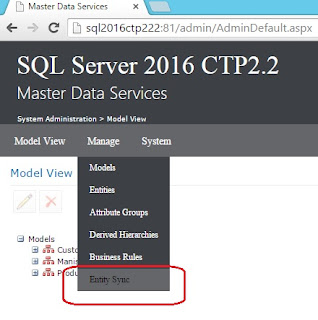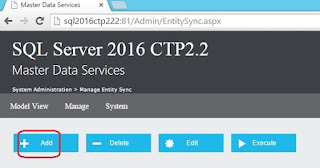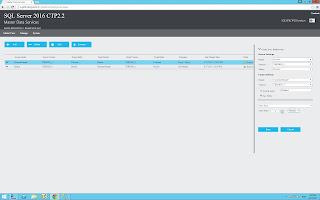To create an entity sync relationship
In Master Data Manager, click System Administration.
Please refer to screen shot below:
Now click on the Model View page, from the menu bar, point to Manage and click Entity Sync.
Please refer to screen shot below:











